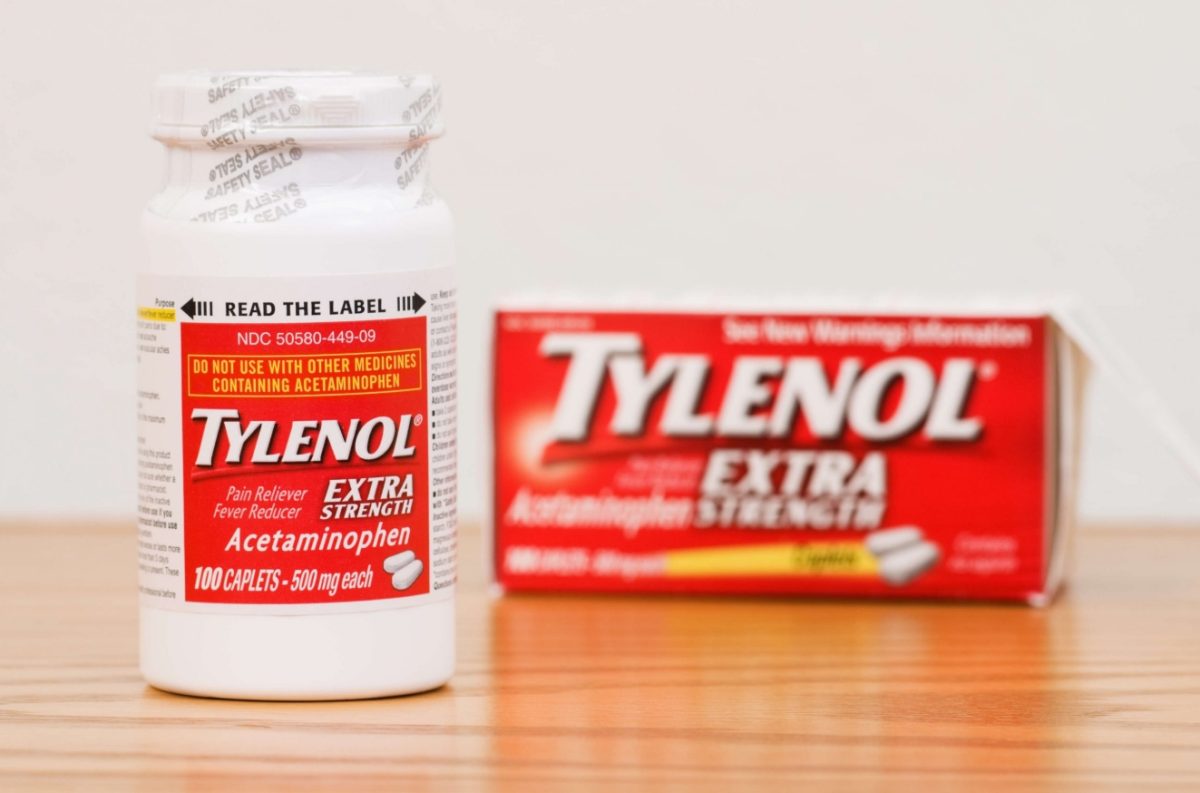The need for a pick-me-up isn’t at all uncommon for many college students, who slog their way through most of the day after missing out on yet another full night of sleep.
For many of these students, a quick solution to their withering poise amid a stressful day is a commodity that some consider the be-all end-all when it comes to energy supplements – energy drinks.
Popular brands of energy drinks that students much like those at Gannon University enjoy on a regular basis include but are not limited to Red Bull, Monster, 5-Hour Energy, Amp, NOS and Full Throttle. If the names of the drinks don’t sum it up well enough, these drinks are meant to provide a quick burst of energy and heighten one’s alertness.
Simply put, the drinks are meant to serve as a liquid wake-up call.
Waking up can be hard to do. There can be nothing more disheartening than waking up to a blustery, winter wonderland in the streets of Erie. Adding to the stress of the weather is the seven straight hours of studying that a student might have done the night before to prepare for a test the next morning.
Katelyn Jacobs, a junior nursing major, knows the anxiety that comes with being a college student and consumes energy drinks as she sees necessary.
“I usually only have about one per week when I’m tired at class,” Jacobs said. “It’s convenient to be able to just go to the vending machine before class and get one.”
Jacobs brings another variable to light as she is not only a student at Gannon, but an athlete as well. Jacobs plays women’s water polo for the Division II Knights, and admitted that while she occasionally gulps down an energy drink before class, she chooses not to use them before water polo matches.
“I have one teammate in particular who uses them at least once a day,” Jacobs said. “I don’t use them before [sporting] events because they’re known to dehydrate after their initial effects wear off.”
Being a nursing student, Jacobs possesses a more extensive knowledge of the positive and negative side effects of energy drinks.
“They have more caffeine than pop, the ones that aren’t sugar-free have a lot of sugar in them and they have a lot of hidden ingredients that people choose not to pay attention to,” Jacobs said.
The drinks have apparent negative and positive effects in the eyes of Jacobs and her teammates, but they don’t weigh enough on them to discourage consumption.
While consuming energy drinks is well-known as a popular practice among students and student-athletes, some faculty members on campus can be spotted feeding the vending machine slot as well. But one professor you won’t catch wearing Red Bull wings is assistant professor of English and women’s volleyball coach, Matt Darling, Ph.D.
“When I was in college, the energy drink was caffeinated soda and coffee,” Darling said. He added that not only does he refrain from using energy drinks, he chooses to not pay much attention to them either.
“I don’t watch a lot of television, but every once in a while you’ll see a 5-Hour Energy or something like that,” he said. “I don’t know anything about that. I’ve never looked at the ingredient label; I haven’t so much as held one in my hand.”
Darling’s concern for his own health is known to translate into concern for his players as well and as far as he knows, his players don’t use them often, if at all.
“We talk about the fact that you shouldn’t be taking anything that’s not been approved by the NCAA,” Darling said, “because if something in one of those drinks would happen to be a banned substance, and we get drug-tested because we make the NCAA tournament, we could be disqualified.”
The theory that Darling tends to fall back on, with regard to energy drinks, is that there is no substitute for a full night of sleep.
“We live in a time where there’s this emphasis on doing as much as possible,” Darling said. “We try to get done as much as possible in a day and an easy way to maximize your time is to not sleep.”
Because players may get run-down throughout the course of the season, Darling encourages his athletes to eat in a healthy manner.
“My theory has always been if it’s natural, it’s OK to put in your body,” Darling said.
Another student at Gannon who is no stranger to the effects that energy drinks can have on your body is chemistry major and former high school baseball standout at Cranberry High School, Zack Borland. Borland said he has felt the pressure to consume the drinks since high school when his baseball teammates would make frequent trips to the gas station before games.
“Everyone would stock up on energy drinks on the bus so I’ve had my fair share of samplings,” Borland said. “They had Red Bulls, Monsters, you name it, and I just never liked the taste of them. They’re too strong and they aren’t good for you.”
Along with playing baseball in high school, Borland also developed an interest in chemistry and biology, which helped shape his decision not to drink the energy supplements.
“There are a lot of hidden ingredients that aren’t so hidden – the ones that the advertisers warn you about on the label,” Borland said of the sugary soft drinks.
Borland added that he usually sticks to natural drinks like tea and coffee for an energy boost on a long day.
“One of the main ingredients is guarine and that’s only one of the mystery ingredients. There are more,” Borland said.
In most cases, it can be quite difficult to locate nutritional facts for the controversial energy supplements.
Red Bull’s website identifies five main ingredients that are used to create the carbonated drink, but it doesn’t list nutritional facts. The ingredients listed are caffeine, taurine, glucuronolactone, B-group vitamins, sucrose and glucose. It goes on to describe each ingredient in a very positive light.
The reason it can be such a chore to find information on the drinks, in large part, is because the drinks are not currently regulated by the Food and Drug Administration. Suzanne Farrell, a spokeswoman for the American Dietetic Association said on WebMD.com that there is scant scientific support for these ingredients to make the kind of claims manufacturers use in hyping their products.
“Most of the energy from these drinks comes from the sugar and caffeine, not from the unnecessary extras,” Farrell said.
The FDA has a limit on how much caffeine can be put into a 12-ounce can of soda but according to the journal of the American Medical Association, it has not set such a limit for energy drinks.
While caffeine is widely seen as the main active ingredient in energy drinks, many companies that create the concoctions claim that there isn’t that much caffeine in the end product.
A spokesman for Red Bull claimed on Redbull.com that an 8.4-ounce can of Red Bull contains the same amount of caffeine as 250 milliliters – roughly one cup – of coffee.
It is an ongoing struggle between producer and consumer, or in some cases the consumer and the advertiser, in determining the nutritional value of an energy drink.
Denise Simon, RN, from Gannon’s student health services, has done extensive research on the topic.
“The scary thing about these energy drinks is that no one really knows what is in them,” Simon said. “The ingredients that should be sending up red flags to consumers are used in marketing strategies to seem healthy.”
Simon has conducted several discussions in recent years with incoming freshmen about how the use of energy supplements can affect the body.
One of her main concerns about students not being aware of the ingredients in the drinks is the situations that can arise out of ignorance.
“People look at ingredients like acai berry and think, hm, this sounds like it would be good for me,” Simon said. “That’s just not the case.”
Some of the risks that she identified pertaining to energy drinks are dental decay, energy highs followed by crashes, headaches, heart palpitations and a higher risk of injury.
Simon suggests that students be good to themselves and their bodies and their energy needs will fall into place.
“Promote a healthy lifestyle including good sleeping patterns and a balance of exercise, rest and stress management,” Simon said. “Be a knowledgeable consumer and be able to read and interpret packaging labels. Using moderation is a good rule of thumb. Be aware of substances that should not be mixed together. Know what behaviors can result in risks to yourself.”







